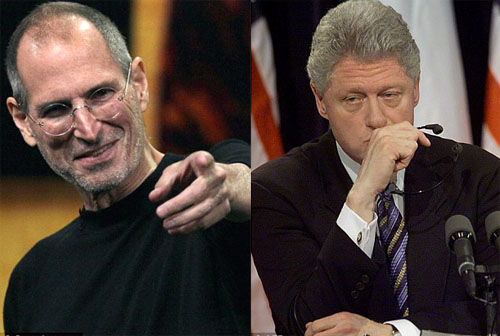Thanks to Ken Segall’s new book about Apple, Insanely Simple, we have heard about how Steve Jobs was willing to dress up as Willy Wonka, and how he felt about the negative reaction to the infamous hockey puck mouse.
Here are three more great anecdotes about Jobs from the book. They include Jobs asking the President to help with Apple’s Think Different campaign, the untold story of how NeXT got its name, and how Jobs almost integrated advertising into Mac OS.
When Apple’s Think Different ad campaign was in full swing, Steve Jobs was always thinking about new people to feature. One week, he came up with what he thought was a great idea: Nelson Mandela.
He talked about what an extraordinary person Mandela was and what an honor it would be to have him appear in our campaign. This wasn’t some mercenary plot to create more buzz for Apple. Steve genuinely wanted to pay tribute to a person he really admired. Only one problem. At that time, Mandela was president of South Africa.
Jobs asked the agency to call Mandela’s people, who politely declined. But Jobs was so taken with the idea, he decided to make a call of his own. Jobs called Bill Clinton — President of the United States at the time — to get him to call Mandela! Jobs was good friends with Clinton and often put him up to stay when the President visited Northern California. Again Mandela declined, but told Clinton he might do it in the future, at least six months after leaving office.
“Steve continued to be disappointed, but at least he was satisfied he’d given it the ‘ol presidential try,” Segall quipped.
—
According to Segall, the story of how Jobs’s company “NeXT” got its name has never been told. It was inspired by Bill Gates — but Jobs never knew it.
Jobs originally wanted to call his new company “Two” because it was his second company. He called an old friend, designer Tom Suiter, who told him it was no good — everyone would ask what happened with his first company!
Shortly afterward, Tom attended a speech by Bill Gates in Seattle. He was struck by the number of times Gates used the word “next” as he described new technologies being developed by Microsoft. That word kept echoing in his head. The more he thought about it, the more right it seemed. He excitedly called Steve and said “I think I have the name for your new company. It’s ‘Next.'” There was a long pause while Steve soaked it in. And then came the enthusiastic “I love it!” It’s ironic that a speech by Bill Gates was actually the spark for the naming of NeXT. Even more amazing, neither Steve nor Bill were ever aware of it.
Segall points out that it was autobiographically perfect — it was Jobs’s next adventure after Apple — and visionary: the company was devoted to the next great computer.
—
Shortly after returning to Apple in the late 1990s, Jobs thought about putting ads in the Mac operating system.
It was back in the days of Mac OS 9, and his team was thinking of a new way to charge for updates to the operating system. Instead of charging the standard $99, which put a lot of users off, perhaps there could be a free version supported by ads. This would encourage even cheapskates to upgrade and still generate revenue. According to Segall, Jobs was very interested in the idea, indicated by a meeting he attended with Chiat Day ad guru, Lee Clow.
It was a shocking idea new idea for Lee and me, but the software people in the room had obviously been wrestling with it for a while. Steve provided some details about how the advertising would work. At system start-up, the user would see a sixty-second commercial. This ad could be regularly changed via updates from Apple’s servers. Throughout the rest of the OS, ads would appear in places where they had the most relevance. For example, if the print dialog box indicated that you were running low on printer ink, you might see an ad from Epson with a link to their store–so you could buy some then and there.
The mood in the room seemed to be very positive, and Steve seemed very intrigued by it. In talking about the commercial that would run at start-up, the consensus was that we would invite only premium companies, and they’d be obligated to deliver very high-quality ads. Lee Clow started imagining the kinds of advertisers we might be able to pull in, like Nike and BMW. Many heads in the room nodded in agreement.Personally, I thought it would be way out of character for Apple to do this. I couldn’t help but think of all the times Steve had so proudly shown off the perfect designs of various Apple products, taking care to point out how they’d been whittled doen to their essence. The idea of inviting advertising into the simple, clean environment of Mac OS 9 seemed to fly in the face of all that. When we left the meeting, Lee and I had the impression that this was really going to happen. But thankfully, it did not. It appeared that too many negatives had come up and Steve had scrapped the idea.
Segall says the story perfectly illustrates Steve’s focus, which he described at the 1997 WWDC:
People think focus means saying yes to the thing you’ve got to focus on. But that’s not what it means at all. It menas saying no to the hundred of other good ideas that there are. You have to pick carefully. I’m actually as proud of the things we haven’t done as the things I have done. Innovation is saying no to a thousand things.


